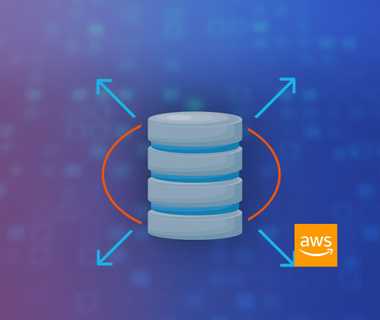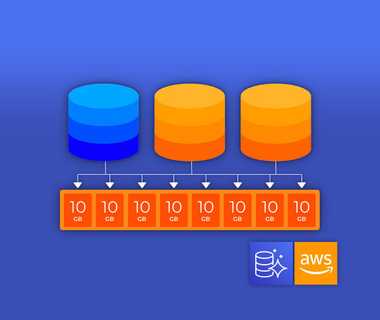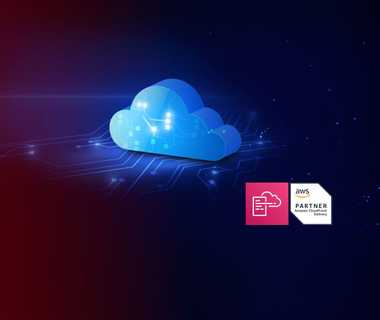
Specialization in Amazon DynamoDB
Amazon DynamoDB is a distributed key-value and table NoSQL database service provided by Amazon Web Services (AWS). It offers high availability and consistent performance, allowing you to store and access data quickly and reliably.

DynamoDB is designed to handle large amounts of data at scales of millions of read and write requests per second. It allows you to create tables with any number of items and attributes and offers replication options to ensure high availability and data durability. Additionally, DynamoDB supports various indexing options, enabling fast and flexible data queries.
DynamoDB is one of the most popular AWS database services and is widely used by businesses of all sizes, from startups to large corporations. It's an attractive option because it's easy to use, offers high availability and consistent performance, and is compatible with multiple programming languages and platforms.

Expertise in Amazon DynamoDB

CloudDog is an Amazon Web Services (AWS) Service Delivery Partner (SDP) that provides implementation, consulting, and support services for AWS products and services. SDPs specialize in different areas and can help companies make the most of AWS products and services, including Amazon DynamoDB.
In Setembro de 2022, we obtained the AWS Service Delivery Partner Designation for Amazon DynamoDB due to our history of excellence in developed solutions.
With this achievement, CloudDog became a part of an exclusive group of partners specialized in delivering Amazon DynamoDB-related services worldwide.
Benefits of Amazon DynamoDB
To extract information and insights from your images and videos, here are some of the features offered by Amazon Rekognition:
- Data Replication and Durability: DynamoDB offers various replication options to ensure data durability and high availability, even in the event of hardware failures or service interruptions.
- Support for Multiple Programming Languages: DynamoDB is compatible with multiple programming languages, including Java, Python, Node.js, C#, Go, Ruby, and others, making integration with existing applications easier.
- Automatic Scalability: DynamoDB can automatically adapt to changes in request demand, ensuring data scalability and availability.
- Security: DynamoDB offers multiple security options to protect data, including authentication, authorization, and encryption at rest and in transit.
- Competitive Pricing: DynamoDB offers competitive pricing compared to other NoSQL databases, and you only pay for what you use. Additionally, DynamoDB offers reserved capacity pricing options, which can be more cost-effective for high-demand workloads.
Amazon DynamoDB Use Cases
Amazon DynamoDB is a versatile NoSQL database that can be used in a wide variety of scenarios. Some common use cases for DynamoDB include:
Gaming Applications
DynamoDB is an ideal database for gaming applications because it can handle high request rates and provide high availability and consistent performance.
Social Media Applications
DynamoDB can be used to store and retrieve user data, posts, and comments in large-scale social media applications.
E-commerce Applications
DynamoDB can be used to store and retrieve product, order, and customer data in large-scale e-commerce applications.
Log Management Applications
DynamoDB can be used to store and retrieve real-time log data, allowing for real-time data visualization and analysis.
IoT Applications
DynamoDB can be used to store and retrieve real-time data from IoT devices, enabling real-time data collection and analysis.
Inventory Management Applications
DynamoDB can be used to store and retrieve inventory and stock data in real-time, allowing for accurate inventory management and updates.
Real-time Management Applications
DynamoDB can be used to store and retrieve real-time data, enabling real-time data visualization and analysis in applications such as air traffic management or network management systems.
These are just a few examples of how DynamoDB can be used. With its flexibility and scalability, DynamoDB is an attractive option for a wide range of applications that require a reliable and highly available database.
Frequently Asked Questions
Does DynamoDB support full-text indexing?
Yes, DynamoDB supports full-text indexing through Global Secondary Index (GSI). This enables you to perform full-text queries on your data, such as keyword searches in a document database.
What is the difference between DynamoDB and Amazon RDS?
Amazon RDS is a relational database service that supports popular databases like MySQL, PostgreSQL, and Oracle. DynamoDB, on the other hand, is a distributed NoSQL key-value and table database. While RDS is ideal for applications that require a relational database model, DynamoDB is better suited for applications that need high availability and consistent performance at large scales.
What is the difference between DynamoDB and Amazon S3?
Amazon S3 is a cloud-based object storage service, while DynamoDB is a NoSQL database. S3 is ideal for storing large amounts of unstructured data, such as image, video, or audio files, while DynamoDB is better suited for storing and retrieving structured data quickly and accurately.
Is DynamoDB compatible with Linux?
Yes, DynamoDB is compatible with Linux and can be used with AWS command-line tools or integrated into applications developed for Linux. Additionally, DynamoDB provides client libraries for various popular programming languages, including Java, Python, Node.js, and others, which can be used in conjunction with Linux.
Is DynamoDB compatible with transactions?
Yes, DynamoDB supports transactions, allowing you to update multiple items in a single atomic operation. This is useful in scenarios where data integrity is critical, such as in managing bank accounts or processing payments.
What is the difference between DynamoDB and Amazon Redshift?
Amazon Redshift is a large-scale data warehousing and analytics service, while DynamoDB is a NoSQL database. Redshift is ideal for storing and analyzing large amounts of data at scale, while DynamoDB is better suited for storing and retrieving data quickly and accurately at scale.
What is the difference between DynamoDB and Amazon ElastiCache?
Amazon ElastiCache is a distributed in-memory caching service, while DynamoDB is a NoSQL database. ElastiCache is ideal for storing data in memory for fast access, while DynamoDB is better suited for storing and retrieving data durably and consistently. ElastiCache is typically used as a caching layer to accelerate the performance of applications using relational or NoSQL databases, while DynamoDB is used as the primary database.
Talk to Our
Experts in AWS Cloud
We offer a wide range of DynamoDB consulting services, including application design and implementation, performance and cost optimization, and scalability troubleshooting.
With our highly experienced and qualified team of DynamoDB experts, we can help you maximize the value of your NoSQL database and make the most of the power of Amazon DynamoDB. Contact us today to schedule a consultation and discuss how we can help you achieve your business goals with Amazon DynamoDB.
Other Specializations

AWS Control Tower
Contact us for more information about how we can help you implement AWS Control Tower for security and compliance.

AWS Config
AWS Config is a service that manages the configuration of all the resources you have in AWS. AWS Config allows you to audit and assess resources.

Amazon API Gateway
With the AWS API Gateway, any developer accessing the Amazon console can publish, upload, monitor and guarantee the security of the API.

AWS Cloud Operations
CloudOps encompasses a wide range of essential tasks to ensure the secure, efficient, and effective operation of infrastructure in the AWS cloud.

Amazon RDS
Amazon RDS is a managed relational database with various automations that offer peace of mind in your day-to-day operations. See the advantages.

Amazon Aurora
Increases the performance of MySQL databases by up to 5x and the performance of PostgreSQL databases by up to 3x.

Amazon EKS
Simplified configuration and management of Kubernetes clusters, with high availability, security and support.

Amazon EC2
Amazon Elastic Compute Cloud (Amazon EC2) offers scalable cloud capacity on the AWS platform, eliminating the need to invest in hardware.

Amazon Rekognition
CloudDog specializes in Amazon Rekognition, a cloud service that provides an image management solution, including uploads, storage

Amazon CloudFront
Reduce your site's load time by speeding up content delivery, e-commerce optimization, institutional site or blog. Talk to our architects!

AWS Database Migration Service
Migrate your on-premises databases with minimal downtime using AWS Database Migration Service. Contact us !

AWS CloudFormation
CloudDog offers AWS CloudFormation services that allow you to manage your cloud infrastructure and deploy it quickly.

AWS Direct Connect
AWS Direct Connect allows you to establish a dedicated network connection between your on-premises environment and AWS infrastructure.

AWS Lambda
AWS Lambda is a computing service that simplifies the creation of applications that respond quickly to new information.

AWS Systems Manager
AWS Systems Manager is an AWS managed service that provides a unified platform for viewing and controlling your AWS infrastructure.

AWS Service Catalog
AWS Service Catalog is a tool that allows you to create and manage a catalog of cloud products for use by your company's users.

AWS Server Migration Service
Migrate your on-premises or virtualized servers with minimal downtime with AWS Server Migration Service. Contact us !

AWS WAF
Are your company's applications prepared against cyber attacks? Lately, these attacks are increasingly increasing.

AWS Well-Architected Framework
CloudDog has a working methodology to guarantee customers an efficient architecture in the cloud with the 6 pillars of the Well Architected Framework.

Network Services
CloudDog works to manage its network structure in the cloud with Amazon Web Services, which provides tools and resources

Computing Services
CloudDog has expertise in managing the most diverse cloud computing services such as: Elastic Beanstalk, EC2, ECS, Fargate, EMR, among others.

AWS Cloud Security
CloudDog is a company specializing in cloud services from Amazon Web Services (AWS). Offering its customers the highest level of solutions

Storage Services
We manage Storage Services for your company to store any amount of data in the AWS Cloud, in a secure and scalable way. Contact us!